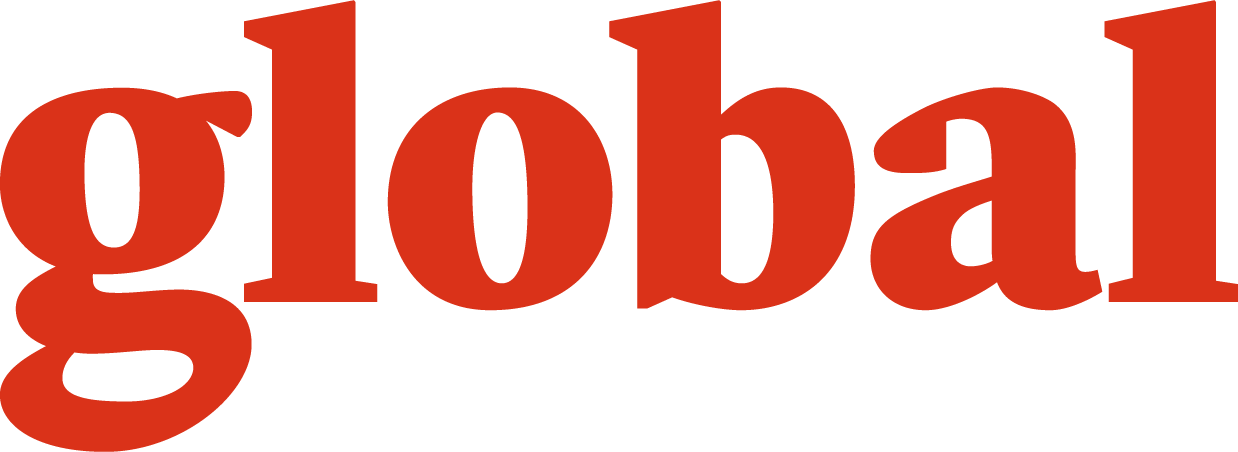Share post now

global
The Alliance Sud magazine analyses and comments on Switzerland's foreign and development policies. "global" is published four times a year (in german and french) and can be subscribed to free of charge.
Article, Global
27.03.2023, Financing for development
Global inequality is growing steadily – unlike development financing by OECD members. Rich countries like Switzerland rely mainly on dubious accounting practices to whitewash their contribution.

Dormitory in an asylum shelter in Poya barracks (Fribourg, Switzerland), which has been used as an asylum shelter for refugees from Ukraine since January 2023.
© Peter Klaunzer/Keystone
In 1969, the Development Assistance Committee of the Organisation for Economic Co-operation and Development (OECD DAC) introduced the internationally recognised benchmark for official development finance, namely Aide publique au développement, or Official Development Assistance (ODA). Since then, it has been the yardstick for gauging the volume and quality of the funds provided and has formed the basis on which to assess whether donor countries are honouring their promises.
ODA is defined as development finance which (a) is provided by state or local governments; (b) aids the economic development and welfare of recipient countries; and (c) is concessional, i.e., involves pure grants or concessional loans. Interpreting this definition invariably spawns highly technical and at the same time political debates. The core issue is deciding which public expenditures can be ascribed to ODA. OECD Member States are criticised from many quarters for artificially inflating their effective contributions by means of dubious and creative accounting practices, thereby constantly watering down the definition of "development assistance".
Criticism of eligibility is forthcoming from the OECD itself, from the countries of the Global South, and from non-governmental organisations worldwide. There are two main tendencies – artificially inflating ODA by including funds which, strictly speaking, do not qualify as development assistance (ODA inflation); and simultaneously cutting funds in areas where they are urgently needed (ODA diversion). Here is how it works:
Since 1988, it has been possible for the costs of housing and educating refugees for the first year of their stay in the donor country (in-donor refugee costs) to be imputed to ODA. While the OECD leaves it up to the countries themselves to decide whether and how much asylum spending they impute to ODA, Switzerland always uses this wriggle room to the full. In 2021, these expenditures made up 9% of Switzerland's total ODA. This includes the lump sums paid to the cantons by the State Secretariat for Migration, the costs of the federal asylum centres (incl. employment programmes), the costs of legal representation during the procedures, those of interpreters and the costs to the cantons for children in the federal asylum centres who are required to attend school. Even though these funds are used to protect people in Switzerland, they have no development implications and do not help to alleviate poverty and inequality in the Global South.
For 2022, ODA can be expected to go through the roof, owing to the inclusion of the costs of caring for Ukrainian refugees (with no additional investment in development cooperation). At worst, asylum costs will be included without any increase in the ODA ratio, which would mean real cuts in other areas. This would mean that poorer countries, which are in any case already feeling the effects of the war, would also be paying for the hosting of Ukrainian refugees in Europe.
In 2016, the OECD Development Assistance Committee decided that the vehicles known as private sector instruments (PSIs) - in other words, various types of loans and investments to private sector enterprises, and guarantees extended to financers who back them - could also be counted as ODA. Because the members of the OECD DAC could not agree on a common definition of "concessional in character" for loans to the private sector, provisional reporting arrangements of PSIs were adopted, which undermine the core value of concessionality. For PSIs to be imputed to ODA, only the additionality of development funds now needs be shown, which is, in principle, eroding the concept of ODA.
So far, the only rationale for crediting PSIs seems to be the perception of private sector as the answer to the lack of and urgent need for development funding. In this connection, a look at the recipient countries is interesting: by far the lion's share of the funds raised through PSIs goes to middle-income countries (2018: 59%, 2019: 51%), compared to 7% (2018) and 2% (2019) received by least developed countries (LDCs). Donor countries need to agree on rigorous and binding criteria and standards, as well as effective transparency and accountability mechanisms that regulate the use of PSIs in development cooperation and do not jeopardise the all-important concessional nature of official development assistance.
PSIs have so far played a marginal role in Switzerland (approx. 1% of ODA in 2021). But this share could well increase massively in coming years, given the ever-greater strategic orientation of international cooperation towards cooperation with the private sector.
In 2021, the Development Assistance Committee decided that COVID-19 vaccine doses donated to poorer countries could be counted as development spending at the reference price of USD 6.72 per vaccine dose. This is as absurd as it is unscrupulous, as these vaccine doses were never bought with poor countries in mind – on the contrary, excessive purchases by rich countries meant that they were neither available nor affordable to other countries. Switzerland's positioning raises further doubts, as it is the only country that is unwilling to disclose the amount of excess vaccine doses it has donated, for reasons of data protection.
The impact on the ODA ratio is considerable. Compared to the previous year, total ODA for all OECD countries was up by 8.5% mainly on the back of COVID-19 support, especially in the form of vaccine donations. Without these vaccine donations, ODA for 2021 would have increased by just 4.8%. The Development Committee is currently debating the reference price that can be applied to ODA donations for 2022. Rather than negotiate the price, DAC members would do better to limit such imputation to vaccine doses actually bought for the Global South.
The ongoing dilution of ODA is undermining the credibility of donor countries. Meanwhile, the Global South lacks the wherewithal for combating the multiple crises that are forcing many people into poverty, hardship and hunger. It seems odd for the OECD DAC itself to be setting the criteria governing the eligibility of public development spending. This is so because, despite the DAC's mandate to ensure the quality and integrity of ODA, most of the agreements reached to date run counter to this and negatively impact the quality and quantity of the funds reaching countries in the Global South. An initial step towards enhancing the integrity of ODA could be to establish an independent statistical body - for example, an official board composed of experts from donor and recipient countries. Only such a board will be able to reform the rules and restore the credibility of reported development funding.
If, as they assert, the rich countries really believe in transparency, sincerity and honouring international commitments, they must cease their petty accounting practices and keep their promises. ODA must be redefined in a strict sense, and put the focus on overcoming poverty and inequality. Switzerland should strive for such a strict ODA definition in the OECD DAC and also apply it in its reporting. Yet another crucial step would be to achieve the 0.7% target without including the costs of asylum, donated COVID-19 vaccines, private sector instruments and scholarships for foreign students in Switzerland. When all these costs are subtracted from the 2021 figures, Switzerland's ODA ratio was just 0.44% (see chart). This is almost a third short of the UN target of 0.7% of gross national income agreed in 1970.
The war of aggression against Ukraine has shown how quickly official development assistance funds can come under pressure. Shortly after the onset of the war, many countries froze or reduced their development cooperation and humanitarian aid budgets, and in some cases, funds were expressly reallocated to meet the costs of housing Ukrainian refugees.
In Switzerland, despite several attacks on development funding in Parliament, it is still not possible to tell how the international cooperation budget will evolve. With the massive expansion of military spending in the years ahead, which is not feasible if the debt brake is to be observed, cuts to weakly earmarked expenditure in the federal budget are already in prospect for 2024. However, cutting back on development spending at this time is exactly the wrong move, as the needs of poorer countries stemming from the multiple crises have never been greater and their action leeway more restricted, owing to the acute debt crisis.
The year 2019 witnessed the introduction of the grant equivalent as a better measure of the "effort" deployed by donor countries. What this means in essence is that pure grants (a greater effort by the donor) and loans (a smaller effort) should not be depicted as equivalent in ODA. Since 2019, therefore, it has only been possible to report the grant component of loans as ODA. So far, so good.
The problem is that grant equivalents are only credible if donors calculate the present value of repayments at current market interest rates. Instead, the DAC opted for fixed interest rates of 6, 7 or 9 per cent (comprising a "base rate" of 5 per cent plus a "risk margin" of 1, 2 or 4 per cent, depending on the per capita income of the borrowing country). These high rates underestimate the present value of repayments, which leads to inflated grant equivalents – and this even for loans granted at market conditions.
Current OECD figures show that the overall ODA impact of the change in methodology has so far been negligible (+2.3% in 2018, +3.6% in 2019 and -0.2% in 2020). The change is nevertheless significant for particular countries that provide a major portion of their ODA via loans to least developed countries (LDCs): in 2020, it was +19% for Japan, +9% for Spain and -12% for France. Switzerland is only marginally impacted by this new methodology, as it imputes only few loans to ODA.
Share post now

global
The Alliance Sud magazine analyses and comments on Switzerland's foreign and development policies. "global" is published four times a year (in german and french) and can be subscribed to free of charge.